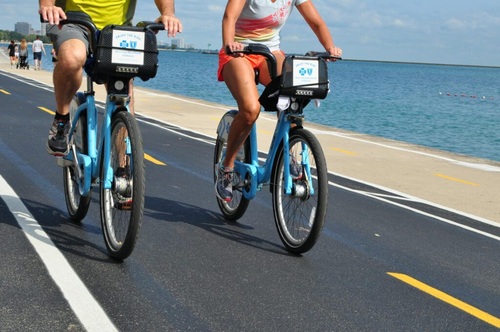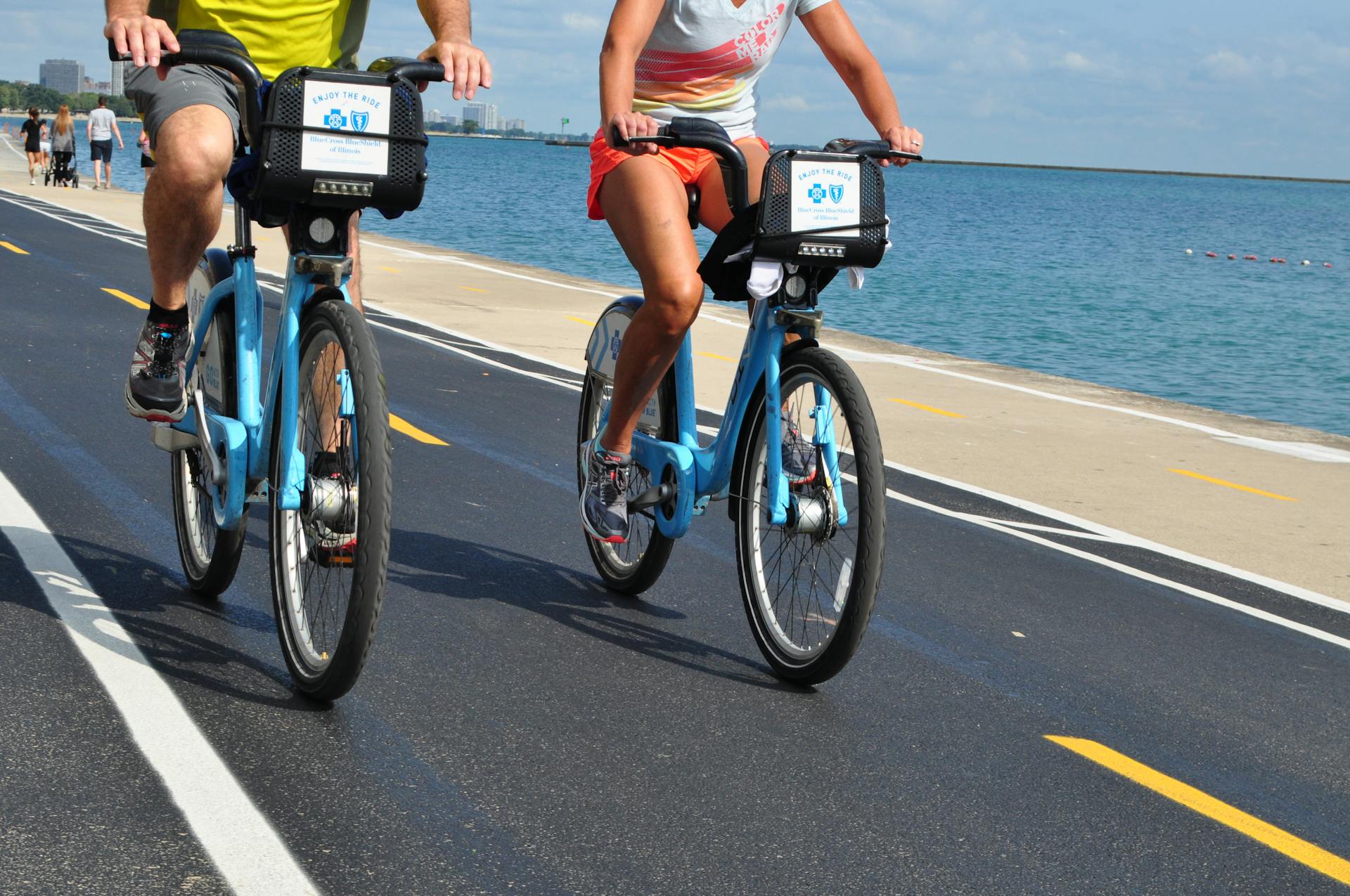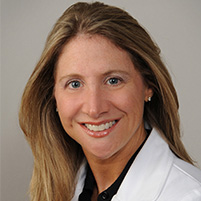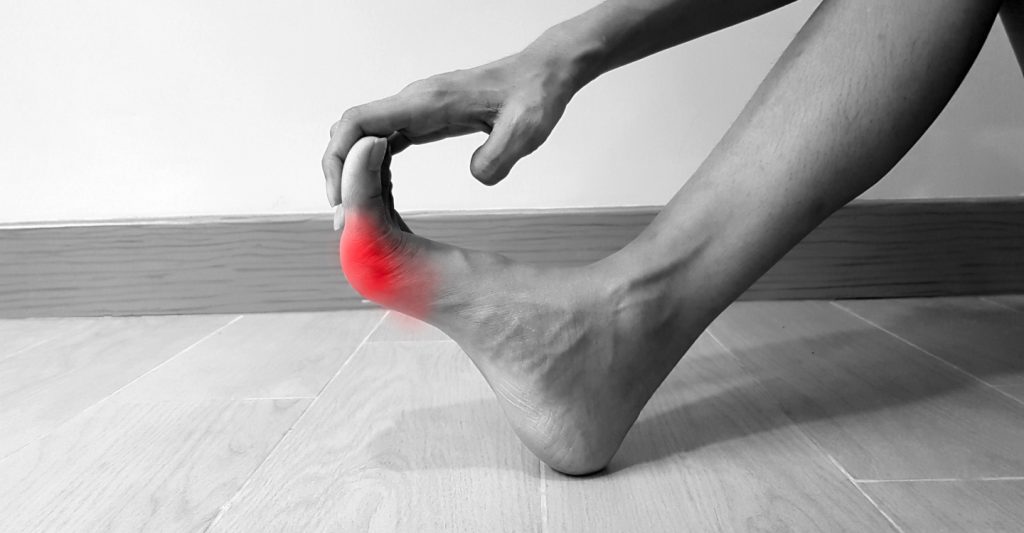An afternoon spent inside may feel like the most effective way to hide unsightly spider veins and varicose veins, but it won’t be a proactive way to deal with them. A sedentary lifestyle is one of the most common contributors to the circulation issues that lead to spider veins and varicose veins, so getting more active can be a huge help in keeping them under control, especially cycling.
Any physical activity that gets you on your feet can make a difference, but cycling is an especially good choice for leg vein issues such as spider and varicose veins.
Varicose veins and spider veins are two common types of vascular diseases affecting people universally. Varicose veins are tortuous venous dilations that are usually blue or purple and bulge through the skin. Spider veins are typically red or blue, flat veins that do not bulge the skin and are near the skin’s surface. Sometimes, it resembles a mini-spider web across one’s legs and feet, hence the name spider veins. Both varicose veins and spider veins are not just blemishes; they also bring about pain and discomfort when walking and doing certain activities.
Although varicose and spider veins are usually benign, they can cause chronic discomfort, embarrassment and pain. Luckily, though, a variety of lifestyle changes and treatments are available to manage venous insufficiency and relieve their symptoms.
Cycling is one exercise that can improve varicose veins offering many health benefits. Among these are improved circulation and building calf and leg muscles. By pedaling under the knee rather than being in a straight leg position on the bike, the formation and progression of varicose and spider veins can be prevented.
In this article, we’ll explore the positive aspects of cycling for varicose and spider veins. Cycling is a low-impact exercise that can help improve vein health and general well-being.

Is Cycling Good for Varicose Veins?
According to studies, vein health can improve with sports like cycling. Varicose veins are enlarged, twisted veins usually occurring in the legs, feet and ankles. They are brought about when valves that keep blood flowing upward (i.e., away from your lower extremities) weaken or begin to malfunction.
As a result of the weakness or malfunctioning valves, you develop vein insufficiency. Blood pools in the veins of the legs rather than causing an efficient return to the heart.
This blood pooling is the reason for bulging and tortuous varicose veins, and the symptoms of pain, discomfort, and aching. Engaging in certain activities can exacerbate symptoms or contribute to their development.
For the large numbers of the general population whose jobs necessitate much standing on their feet all day, this inherently presents a problem. Particularly at times such as these, they need relief. Varicose veins can take an emotional toll on one’s spirit that only the sufferer knows.
What Are Spider Veins?
Spider veins, also called telangiectasia, are smaller, near-surface blood vessels that have widened. They typically appear to be red, blue, or purple threadlike markings and are similar in form to spider webs or tree branches. Unlike varicose veins, spider veins usually have no significant symptoms but can give rise to cosmetics concerns for some people.
Causes and Risk Factors
Several factors contribute to the development of varicose veins and spider veins, including:
- Genetics: Family history, in particular, significantly predisposes individuals to vein conditions
- Age: The older a person becomes, the more likely he or she is to develop varicose veins or suffer from other venous conditions. As time goes on, blood veins lose their elasticity, which in turn leads to failing valves. Additionally, age can be a factor for problematic blood vessels, as women are more likely to get these diseases because of hormonal changes over the course of their lives, be it puberty, pregnancy, or menopause.
- Prolonged Standing or Sitting: Jobs that involve long periods of standing or sitting, as well as other activities like ballet and wrestling, can sometimes cause excessive pressure on the veins, leading to their damage.
- Obesity: Overweight people add weight and thus strain their veins, contributing to venous insufficiency.
- Lack of exercise: A sedentary lifestyle can lead to poor circulation and weaken the muscles that support vein function.
- Other factors: Hormonal changes, pregnancy, an injury from other causes in the form of both repetitive trauma over time (e.g., from the work of woodworkers) and unusual forms such as whiplash, or fractures, can affect people with vein diseases too.
Common Signs And Complications
Patients with varicose veins or spider veins may experience:
- Pain in the legs or feet, especially after prolonged periods of standing or sitting. The pain associated with vein insufficiency is tiredness, aching and heaviness in the legs.
- Swelling and pain when touching the skin on your legs or ankles
- Itchy sensations that run along an affected vein in the leg, making people feel like they need a massage on their aching legs
- Discoloration of the skin
The Link Between Cycling and Vein Health
Is cycling suitable for varicose veins? Regular cycling can help lower the risk of developing varicose veins causing symptoms. Cycling is a low-impact exercise, giving you an excellent cardiovascular workout. By promoting weight loss, maintaining a relatively healthy heart and good circulation, cycling also keeps off varicose and “spider” veins. Incorporating cycling and varicose veins into your routine can improve vein health and minimize the likelihood of developing varicose veins.
These are some of the benefits of cycling for varicose veins and spider veins:
More Efficient Blood Flow and Circulation
Cycling improves blood flow and circulation throughout the body, especially the lower extremities. The repetitive pedaling helps stimulate blood flow and oxygen supply to muscles and tissues in the legs. This increased circulation supports the removal of waste products and metabolites from tissues, reducing inflammation and promoting overall vein health.
Calf Muscle and Venous Strength
Pedaling helps the calf muscles do their own venous pump work. The rhythmic contraction and relaxation of the calves’ muscles effectively squeeze veins toward the heart.
Promoting Venous Return from the Legs
When people pedal, their calf muscles pump blood that otherwise tends to pool in the veins of their legs and feet. This promotes better venous return and lessens the risk of developing varicose and spider veins, another type of unsightly capillary growth.
Minimizing Swelling and Other Symptoms
The swelling and discomfort in the legs with varicose veins and spider veins can be reduced by pedaling. Cycling promotes circulation, reduces venous congestion, and strengthens muscle tone. When someone pedals, fluid is mobilized from his tissues, as if by a pump system, incorporating the flow pattern we described earlier. Hence, this tends to reduce swelling and discomfort. Also, endorphins are released during exercise, providing an analgesic effect that generally makes people feel better.
Impact Of Cycling On Venous Return
During cycling, blood circulation improves while strong calf muscles pump the veins of your leg. Thus, incorporating cycling into a regular exercise routine supports optimal vein health and minimizes the chance of getting varicose or spider veins.
The calf muscles are of prime importance in promoting venous return—this is why people recommend not standing for a long time. The calf muscles contract and relax sharply with each pedal stroke when pedaling. They act like a pump to push the blood upward from your legs towards your heart. This movement counters the force of gravity, thus minimizing standing discomfort, and helps maintain efficient overall circulation throughout the body.
Additionally, does cycling help circulation in legs? Yes, cycling helps improve circulation in the legs by encouraging greater blood flow to muscles and tissues and vasodilation, which in turn lowers the risk of vein-related problems.
Also, cycling promotes a condition known as vasodilation. This means that the blood vessels are made more comprehensive, making it easier for blood to flow to muscles and tissues. By increasing venous return and circulation, cycling reduces the risk of developing varicose and spider veins. Regular cycling also increases calf muscle strength and ensures venous return with the slightest chance of vessel insufficiencies.
Introducing cycling routes into a regular exercise program can help maintain good health over the long term and reduce the chances of developing vein problems. Whether you take your bike outside or use an indoor stationary one, this low-impact exercise provides many benefits for circulation, muscle fitness, and general well-being.
Conclusion
Throughout this article, we’ve looked at numerous ways in which cycling accommodates vein health—from improved blood flow and circulation to strengthening calf muscles, replacing other activities that come close. It may even have no similarly positive effects on varicose vein risk factors or help alleviate spider veins.
If you want a natural way to improve vein health, consider cycling as part of how it can create pleasure in your life. Whether going to work each day, exploring the beautiful countryside, or simply taking a stroll through your city’s parks, cycling offers a convenient and effective means for increasing circulation, strengthening leg muscles and relieving symptoms associated with vein diseases.
With any new exercise program you undertake, it is essential to consult a healthcare professional first, especially if you have pre-existing vein disorders or any other medical problems. Based on your individual health status, a healthcare provider can provide personalized recommendations and help you devise a safe and efficacious cycling cycle. Does cycling help circulation in legs? Cycling on a regular basis can help increase circulation and blood flow in the legs, which is good for vein health.
In summary, cycling and varicose veins are related to becoming an asset in managing varicose veins and spider veins. It offers health benefits for veins besides promoting a balanced mind and body. By incorporating cycling into your daily regimen and seeking doctors’ advice, you can make preemptive moves towards better vein health while enjoying the numerous rewards of living an active and fulfilled life.
Remember, every pedal turn advances you toward healthy veins and a happier lifestyle. So wear your helmet, get on the bike, and begin pedaling toward better vein health.
Visit Foot, Ankle & Leg Vein Center
If you are experiencing issues with varicose or spider veins, you might need to consult a vein specialist or vascular surgeon.
The Foot, Ankle & Leg Vein Center is your local podiatrist in Boca Raton and Boynton Beach, FL. We diagnose and treat all kinds of foot, ankle, and leg vein care.
Dr. Jason Gold, DPM, and Dr. Jodi Schoenhaus, DPM, specialize in treating conditions related to leg veins. Both doctors also have extensive experience treating spider veins and varicose veins. Contact us today to get the best treatment for your symptoms and conditions.
Cycling for Spider Veins and Varicose Veins FAQs
What Are the Benefits of Cycling for Foot Health?
Cycling flexes your calves. Pedaling a bike stimulates blood flow through the legs, improving strength and circulation. It also can help you lose weight. This perk is not exclusive to cycling, but the low-impact activity is especially valuable to those with joint problems due to excess weight.
How Do You Maximize the Benefits of Cycling for Spider and Varicose Veins?
Wear your compression stockings. Many people with spider and varicose veins are already familiar with compression stockings, often used as a conservative treatment for circulation issues. Wear your stockings as you cycle to get even more circulatory benefits from your bike rides.
What Are the Health Benefits of Cycling?
Cycling offers a host of benefits. It can improve your coordination, heart health, immune system, and mental health. Spending at least 30 minutes on your bike daily can help you prevent chronic diseases and sickness.
References
Antani MR, Dattilo JB. Varicose Veins. [Updated 2023 Aug 8]. In: StatPearls [Internet]. Treasure Island (FL): StatPearls Publishing; 2024 Jan-. Available from: https://www.ncbi.nlm.nih.gov/books/NBK470194/
Gwozdzinski L, Pieniazek A, Gwozdzinski K. Factors Influencing Venous Remodeling in the Development of Varicose Veins of the Lower Limbs. Int J Mol Sci. 2024 Jan 26;25(3):1560. doi: 10.3390/ijms25031560. PMID: 38338837; PMCID: PMC10855638.
InformedHealth.org [Internet]. Cologne, Germany: Institute for Quality and Efficiency in Health Care (IQWiG); 2006-. Varicose veins: Overview. 2008 Feb 20 [Updated 2019 Sep 25]. Available from: https://www.ncbi.nlm.nih.gov/books/NBK279247/
Orhurhu V, Chu R, Xie K, Kamanyi GN, Salisu B, Salisu-Orhurhu M, Urits I, Kaye RJ, Hasoon J, Viswanath O, Kaye AJ, Karri J, Marshall Z, Kaye AD, Anahita D. Management of Lower Extremity Pain from Chronic Venous Insufficiency: A Comprehensive Review. Cardiol Ther. 2021 Jun;10(1):111-140. doi: 10.1007/s40119-021-00213-x. Epub 2021 Mar 11. PMID: 33704678; PMCID: PMC8126535.
Sandean DP, Winters R. Spider Veins. [Updated 2023 July 4]. In: StatPearls [Internet]. Treasure Island (FL): StatPearls Publishing; 2024 Jan-. Available from: https://www.ncbi.nlm.nih.gov/books/NBK563218/



